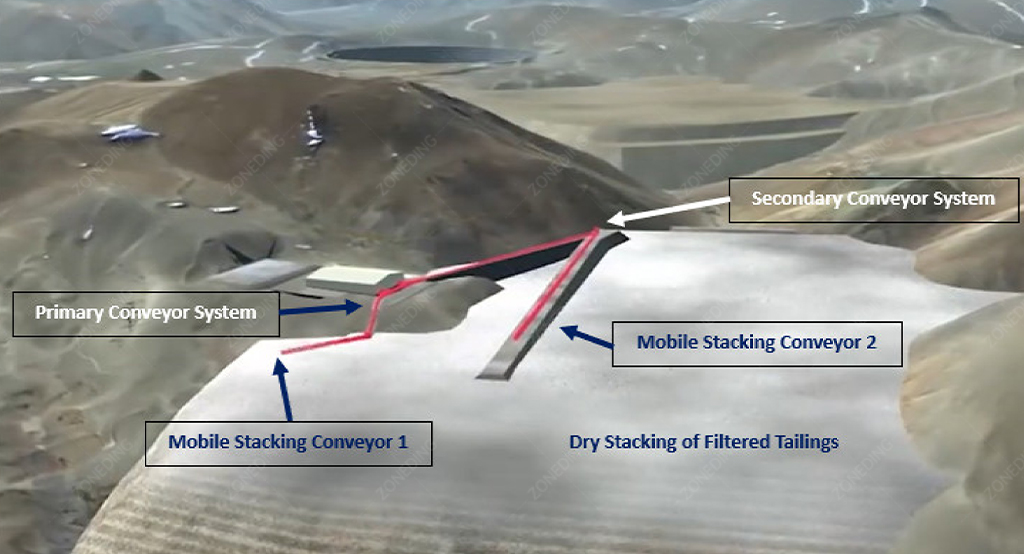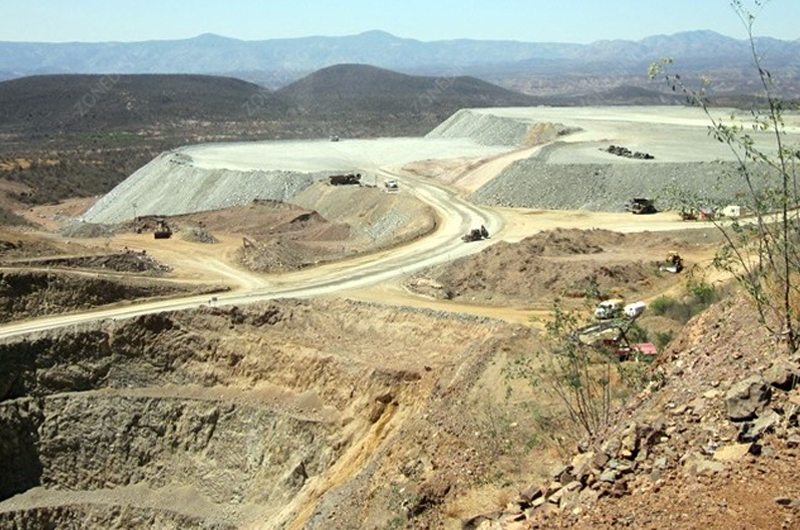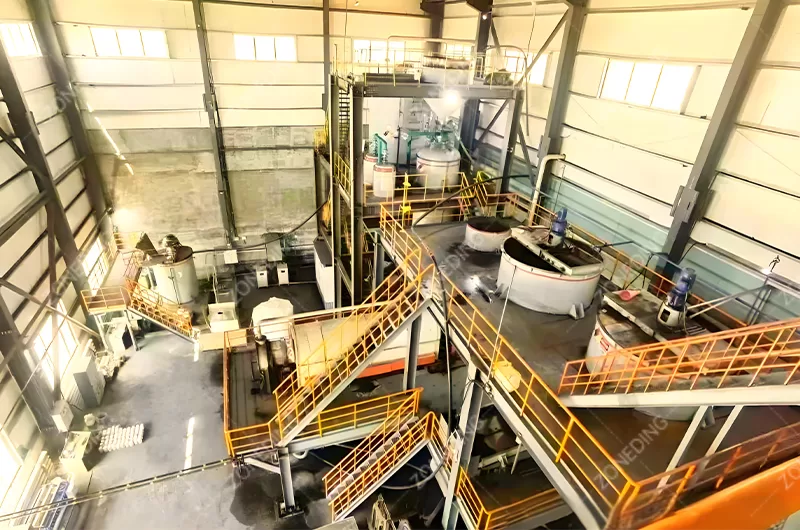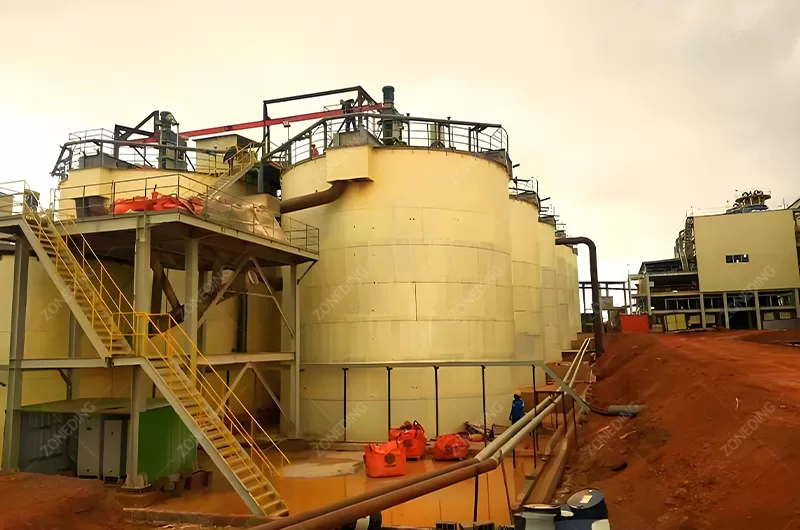Is It Gold? How to Identify Gold Ore Accurately
3508Learn simple, effective methods to identify gold ore. Our guide covers key tests like streak and hardness to help you tell real gold from fool's gold.
View detailsSearch the whole station Crushing Equipment
Gold mine tailings can be reprocessed to extract gold. This is feasible due to three main factors. First, past technology was inefficient and left gold in the waste. Second, the current price of gold makes lower grades of material profitable. Third, modern processing technology is more effective and has lower operational costs.

Tailings are the waste material from previous mining operations. The material is already mined and ground into fine particles. This eliminates the need for new blasting and primary grinding, which are major costs in a new mining project. Reprocessing tailings uses modern methods to recover the remaining gold from this material. It is a technical process based on economic and technological realities.
Old mining operations were not able to recover all the gold from the ore. The technology at the time had limitations. This resulted in gold being discarded with the waste material.
Past technology could only recover coarse gold particles effectively. Fine gold particles, or gold locked inside other minerals, were lost to the tailings. Modern methods can now recover this previously unrecoverable gold.
Early gold recovery methods included mercury amalgamation and simple gravity separation. These methods work well for large, free particles of gold. They do not work well for gold that is microscopic or chemically bound within sulfide minerals like pyrite. As a result, a significant amount of gold was discharged into tailings dams. Today’s technology, such as the Carbon-In-Leach (CIL) process or Gold Flotation, is designed to extract these fine and complex gold particles. This turns old waste material into a resource for a new operation.
| Factor | Past Technology | Modern Technology |
|---|---|---|
| Target Gold | Coarse, free gold particles. | Fine, encapsulated, complex gold. |
| Common Method | Mercury, gravity separation. | CIL, CIP, Heap Leaching, Flotation. |
| Typical Recovery | Often under 70%. | Can be over 90%. |
| Outcome | Gold was left in the waste. | This “waste” can be reprocessed for profit. |
The profitability of processing any mineral deposit depends on the market price of the commodity. Tailings are not different. The price of gold is a direct factor in their economic potential.
A high gold price makes it profitable to process material with a low gold content. Material that was considered waste at a low gold price becomes a valuable ore at a high gold price.
The “cut-off grade” is the minimum grade of ore that is profitable to process. This grade is determined by the balance between the value of the recovered gold and the cost of production. When the gold price increases, the cut-off grade decreases. For tailings reprocessing, production costs are already lower because the mining and grinding stages are complete. This fact, combined with a high gold price, makes tailings with very low grades, such as 0.5 grams per ton, economically viable to process. What was once waste is now an asset.
| Gold Price (USD/oz) | Historical Cut-off Grade (Hard Rock) | Potential Tailings Grade (Today) |
|---|---|---|
| ~$350 | ~3.0 g/t | Not Profitable |
| ~$2000+ | ~0.8 g/t | Profitable at 0.5 g/t |
Old tailings facilities can pose environmental risks. They can contain materials that are harmful to the surrounding area. Reprocessing these tailings can be part of an environmental solution.
Reprocessing tailings removes gold and also isolates or neutralizes harmful components, such as sulfides. The resulting inert material is then stored in a modern, lined, and safe facility. This process turns an environmental liability into a stable material.
Many old tailings dams contain sulfide minerals. When exposed to air and water, these sulfides can generate acid, a process known as acid rock drainage (ARD). This acid can dissolve and transport heavy metals into groundwater and rivers. The processes used to recover gold, such as flotation or cyanidation, often involve removing or altering these sulfides. After gold extraction, the final waste is chemically stable. This material can be dewatered using equipment like a High Efficiency Concentrator and stored securely. This action remediates an environmental problem.


Before any investment, the content of the tailings must be accurately determined. A guess or an old report is not sufficient. A systematic evaluation is required.
The first step is to conduct a thorough sampling and analysis program. This involves drilling into the tailings on a grid pattern to collect representative samples from all areas and depths. These samples are then analyzed by a laboratory.
To understand the potential of a tailings dam, it must be treated as a new mineral deposit. A grid is established over the surface, and samples are collected at regular intervals using an auger or drill. Each sample’s location and depth are recorded. The samples are then sent to a certified lab to determine the gold grade, the presence of other valuable metals, and the mineral composition. This mineralogical data is important because it identifies any elements that might interfere with the recovery process. This information is the basis for all technical and financial decisions that follow.
Once the tailings’ value is confirmed, a specific processing plant must be designed. The equipment selection is based on the material’s characteristics and the project’s economic goals.
The most common process for reprocessing tailings is Carbon-In-Leach (CIL). Heap leaching is used for very large, low-grade deposits. Core equipment includes slurry pumps, agitated tanks (Mixers), screens, and a gold recovery circuit.
The reprocessing circuit does not require primary Crushing Equipment. The process begins by mixing the tailings with water to form a slurry. For CIL, this slurry is pumped into a series of large tanks where cyanide and activated carbon are added. The cyanide dissolves the gold, and the gold attaches to the carbon. The carbon is then separated from the slurry using screens, and the gold is recovered from the carbon in a separate circuit. For heap leaching, the tailings are stacked on a liner, and a cyanide solution is sprayed over the pile. The solution dissolves the gold as it drains through the pile and is collected.


| Feature | Carbon-In-Leach (CIL) | Heap Leaching |
|---|---|---|
| Material Grade | Higher grade (>0.7 g/t) | Lower grade (<0.7 g/t) |
| Gold Recovery | High (85-95%) | Moderate (50-70%) |
| Process Speed | Fast (24-48 hours) | Slow (Months) |
| Capital Cost | Higher | Lower |
A tailings reprocessing project has a distinct set of potential advantages and disadvantages compared to a new mine. These must be understood before making an investment.
The main opportunity is the low capital and operating cost because mining and grinding are not required. The main risk is metallurgical; the gold may be locked in minerals in a way that makes it technically difficult or uneconomical to extract.
The primary opportunity is economic. Bypassing the need for a large mining fleet and a grinding circuit significantly reduces initial investment and ongoing energy costs. There may also be opportunities to recover other valuable metals, like silver or copper, that were not the focus of the original operation. The primary risk is technical. The metallurgical test work might show that the gold recovery is low, or that the process requires an excessive amount of reagents, making it unprofitable. Inconsistent grades throughout the tailings dam also present a risk. A detailed feasibility study is necessary to quantify these risks and opportunities.
A complete project is a systematic workflow. It starts with the old tailings and ends with pure gold and a stable, safe waste product.
A project involves excavating tailings, creating a slurry, leaching the slurry to dissolve gold, adsorbing the gold onto carbon, recovering the gold from the carbon, and then detoxifying and storing the final waste material.
The process is a closed loop designed for efficiency and environmental responsibility. Each step is engineered to work with the next. The management of the final waste product is a required part of the project plan. A modern operation ensures that the final output, besides gold, is water that can be recycled and a solid waste that is geochemically stable for long-term storage. The entire operation is a sequence of established industrial processes.
| Step | Action | Description |
|---|---|---|
| 1. Excavation | Tailings are moved from the old dam using excavators or water jets. | This is the “mining” stage of the project. |
| 2. Slurrying | The material is mixed with water to create a slurry with a specific density. | The slurry can be pumped to the plant. |
| 3. Leaching | The slurry is processed in a plant, typically CIL, to extract gold. | This involves chemical dissolution and adsorption. |
| 4. Gold Recovery | Gold is stripped from the loaded carbon and smelted into doré bars. | This is the final product of the plant. |
| 5. Waste Treatment | The processed slurry is treated to destroy any remaining chemicals. | This ensures the final waste is non-toxic. |
| 6. Final Storage | The treated, solid waste is placed in a new, engineered storage facility. | This completes the environmental remediation aspect. |
Reprocessing gold tailings is a technical process to recover gold from old mine waste. Its success depends on favorable economics, driven by the gold price and modern, efficient technology.
Learn simple, effective methods to identify gold ore. Our guide covers key tests like streak and hardness to help you tell real gold from fool's gold.
View detailsEssential machinery for cyanidation gold extraction: crushers, mills, leaching tanks, and recovery systems vital for efficient gold recovery from ore.
View detailsOptimize ball mill performance, minimize downtime, and extend lifespan by mastering operation, key maintenance, and problem analysis.
View detailsReduce costly downtime and extend the service life of your ball mill liners. Discover 5 expert solutions to diagnose and fix the root causes of rapid wear.
View detailsWe use cookies to ensure that we give you the best experience on our website. If you continue to use this site we will assume that you are happy with it.
Privacy Policy